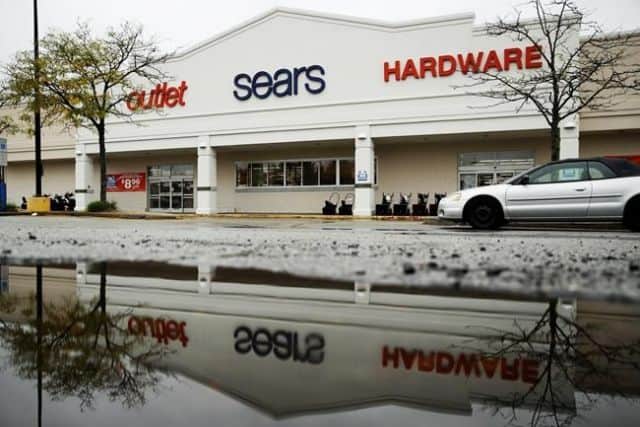Before there was Amazon — or, for that matter, Home Depot or Walmart or Kmart — there was Sears.
From its beginnings as a mail-order watch business in Minneapolis 132 years ago, the company grew to become America’s everything-under-one-roof store and the biggest retailer in the world.
For generations of Americans, the brick-like Sears, Roebuck and Co. catalogue was a fixture in just about every house — a miscellany of toys and clothes and furnishings and hardware that induced longing for this or that dream purchase. The Sears brand loomed as large over the corporate landscape as its 108-story basalt-like headquarters did over the Chicago skyline.
“It was the Amazon of its day,” said Mark Cohen, a professor of retailing at Columbia University and a former Sears executive.
But how the mighty have fallen: Plagued by falling sales and heavy debt, Sears filed for Chapter 11 bankruptcy reorganization Monday and announced plans to close 142 of its roughly 700 remaining stores and eliminate thousands of jobs in a bid to stay afloat, if only for a while.
Analysts have their doubts it will survive.
“In our view, too much rot has set in at Sears to make it (a) viable business,” Neil Saunders, managing director of GlobalData Retail, said in a note to investors.
Its bankruptcy was years in the making. Sears diversified too much. It kept cutting costs and let its stores become fusty in the face of increasing competition from the likes of Walmart and Target. And though it expanded onto the Internet, it was no match for Amazon.
“In point of fact,” Cohen said, “they’ve been dead for a very long time.”
In its bankruptcy filing, Sears Holdings, which operates both Sears and Kmart stores, listed assets of $1 billion to $10 billion and liabilities of $10 billion to $50 billion. It said it has lined up $300 million in financing from banks to keep operating and is negotiating an additional $300 million loan.
The company once had around 350,000 employees; as of Monday’s filing, it was down to 68,000. At its peak, it had 4,000 stores in 2012; it will now be left with a little more than 500.
Sears was born in 1886, when Richard W. Sears began selling watches to supplement his income as a railroad station agent in North Redwood, Minnesota. By the next year, he had opened his first store in Chicago and had hired a watchmaker named Alvah C. Roebuck.
The company published its first mail-order catalogue in 1888. Together with companies like Montgomery Ward and J.C. Penney, Sears helped bring American consumer culture to middle America.
“It’s hard to imagine now how isolating it was to live in a small town 100 years ago, 120 years ago,” said Marc Levinson, author of “The Great A&P and the Struggle for Small Business in America.” ”Back before the days of cars, people might have a ride of several days in a horse and buggy just to get to the nearest train railhead, nearest train station.”
“What Sears did was make big-city merchandise available to people in small towns,” he said.
There was a time when you could find just about anything for your house in the Sears catalogue — including a house. Between 1908 and 1940, the company sold about 75,000 build-from-a-kit houses, many of which are still standing.
Sears’ offerings could cover you from cradle to grave: It even sold tombstones. In between, there was everything from girdles to socket wrenches, dresses to guns, dolls to washing machines.
The Sears catalogue “was second only to the Holy Bible in terms of the household importance,” said 71-year-old novelist Allan Gurganus, author of “The Last Confederate Widow Tells All.” He grew up in Rocky Mount, North Carolina, and recalls the way tenants on his grandfather’s farm loved the catalogue.

